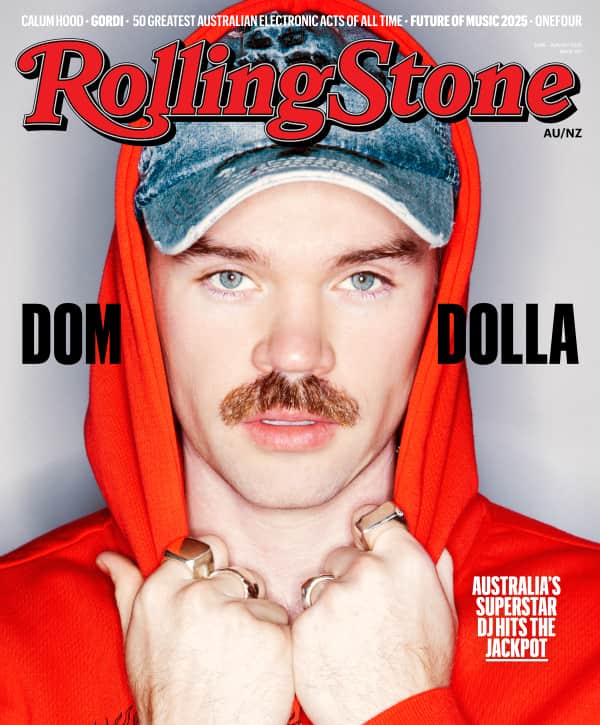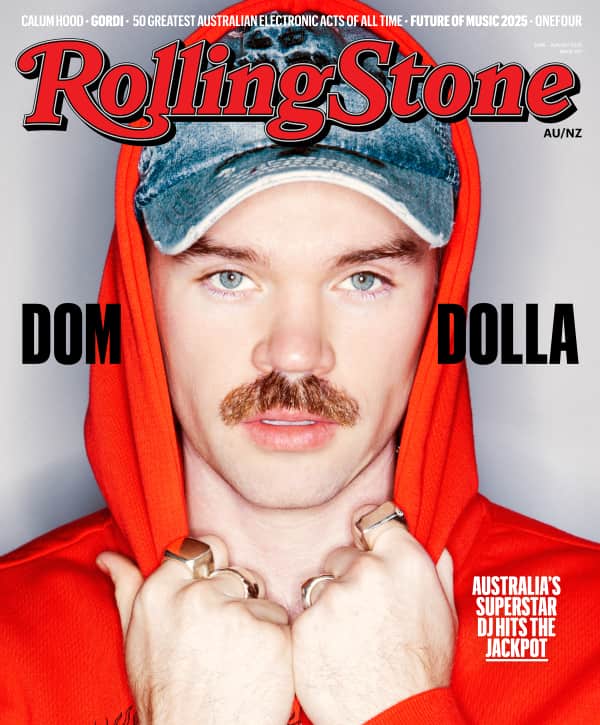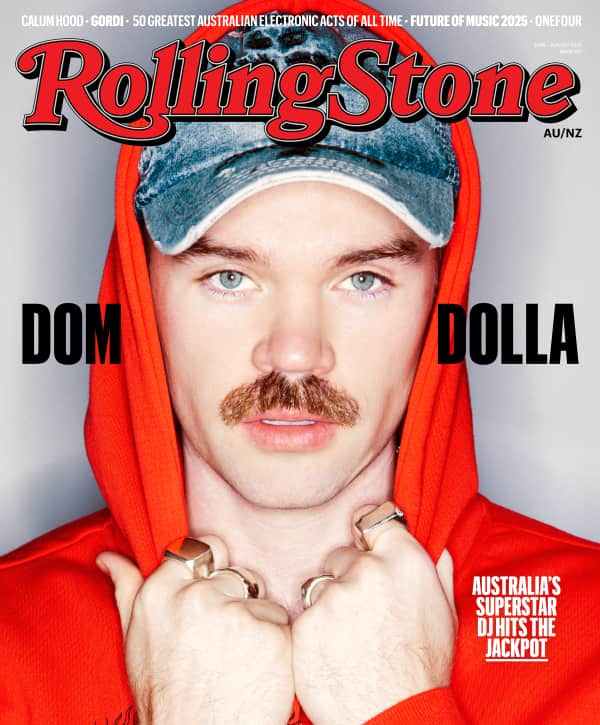Stand-up comics: Armed with little more than a spotlight, a microphone and impeccable timing, they can do what few entertainers (or mere mortals) can, i.e. leave audiences in cafes, clubs and, occasionally, arenas in stitches. But like most of us, what they really want to do, apparently, is direct. Hitting theaters this weekend, Chris Rock’s Top Five is not the first film the comedian has helmed — yet it’s the only one he feels is most representative of what he does best. “This movie is the closest I’ve gotten to capturing the tone of my stand-up,” Rock told Rolling Stone.
Of course, the comic superstar is not the only comedian to go from working a two-drink-minimum crowd to working behind the camera. Here’s our list of the best stand-ups who’ve made the jump from funnyman to filmmaker — whether the switch was a one-off lark or a full-on career gamechanger, whether their films succeeded or failed, these men and women went from prowling the stage to calling the shots on the set.
Joan Rivers
The late, great comedienne was known for tearing into vapid celebrities, fellow Tonight Show guests, red-carpet offenders and hecklers with a vicious, venomous wit. But surprisingly, Joan Rivers’ one-and-done turn as a filmmaker was comparatively tamer than her take-no-prisoners stand-up act — it’s the story of the world’s first pregnant man, as played by fellow comedian-turned-auteur Billy Crystal. Yes, it’s as weird as it sounds. Possibly even weirder.
The Must-See: Can we talk about Rabbit Test (1978)? It’s an idea ripe for sending up the era’s gender politics, and the scenes, gags and transitions have no small amount of off-kilter energy to them. The comedy’s Carol Burnett Show-esque direction doesn’t do the movie any favors, however, and cameos from Seventies stalwarts like Paul Lynde and George Gobel detrimentally carbon-date it. Rivers’ insult-heavy act felt timeless; Rabbit Test, on the other hand, has not aged well.
Larry David
Larry David’s career has always confounded expectation and logic. Starting as a stand-up, he converted to writing for TV; hating the medium, David then co-created one of the defining sitcoms of the era with Seinfeld. Right at the height of of his success with his show-about-nothing, he made his big-screen directorial debut — and it flopped. And just when you thought the man was out for good, he made a stand-up special of sorts for HBO, which set the stage for Curb Your Enthusiasm and turned David into a genuine TV star in his own right. But about that movie….
The Must-See: At best, Sour Grapes (1998), David’s comedy about jealous relatives, is an interesting experiment in taking everything vital about a comedian’s voice (e.g. pettiness, misanthropy and an attention to details) and using it in the wrongest ways imaginable. At worst, it makes you feel like you’ve been chewing on that titular rancid fruit for hours. He has yet to try his hand at filmmaking again.
Billy Crystal
A man seemingly determined to keep the tradition of the Borscht-Belt comedian alive, Billy Crystal has always come across as a comedian who put slightly contemporary spins on old jokes and routines; even his impressions felt like they’d been lifted from decades-old routines. (A bit from his 1987 special “Don’t Get Me Started” features Crystal doing the voices of Yul Brynner and Edward G. Robinson from 1956’s The Ten Commandments. This during the Reagan era!) So it’s not surprising that of the two theatrical films he’s directed, one (1995’s Forget Paris) revolved around a fairly conventional genre that Crystal felt comfortable in — the romcom — and the other centered on an old TV comedian working in the Catskills.
Love Music?
Get your daily dose of everything happening in Australian/New Zealand music and globally.
The Must-See: Mr. Saturday Night (1992) offers Crystal the opportunity to both tell a lot of ancient jokes and play up the schmaltz and sentimentality he likes in his dramas. He did, however, give himself the role he was born to play — Buddy Young Jr., a comic who brings the old “vaude-ah-ville” schtick to audiences everywhere and craves laughter at any cost.
Eddie Murphy
As a stand-up, Murphy took the style of his comic predecessors — notably Redd Foxx and Richard Pryor — and pumped it up to Eighties levels of arena-rock bombast, cracking up huge crowds with jokes about family BBQs and Michael Jackson with leather-suit swagger. But behind-the-camera stardom didn’t come as easy to Murphy as SNL-, movie- and comedy concert-stardom; to date, he’s only directed one film and it wasn’t received warmly by critics or audiences.
The Must-See: Harlem Nights (1989) was Murphy’s attempt to do both an old-fashioned gangster movie and a sort of Ocean’s 11-style film for great African-American comedians. It doesn’t exactly hold together on either level, though he did get to cast both Foxx and Pryor, marking the only time these three stand-up titans would work together.
Bob Odenkirk
Having started out as a Nineties alt-comic who honed his skills at L.A.’s famed UnCabaret, Bob Odenkirk has enjoyed two eras of cult fame — as one half of HBO’s sketch-comedy classic Mr. Show and, more recently, as sleazy lawyer Saul Goodman on Breaking Bad and its upcoming spinoff Better Call Saul. But he’s also developed a directorial career distinguished by a few genuine big-budgeted misses (Let’s Go to Prison, The Brothers Solomon) and some underrated, under-the-radar indies.
The Must-See: Odenkirk’s first film, Melvin Goes to Dinner (2003), adapted Michael Blieden’s play about a meal-turned-impromptu therapy session for the screen and proved he was just as interested in character-based dramas as he was in raunch-coms.
Richard Pryor
A strong contender — and we do mean strong — for the title of the Greatest Stand-Up Comic ever, Richard Pryor personalized and revolutionized the form; ask virtually any stand-up what the incendiary comedian did for opening up the medium, and he or she will talk your ear off for hours. And while you would not characterize either of the films that Pryor directed as being particularly “revolutionary,” they both contain the compelling mixtures of fact and fiction, real life and storytelling, that made his best bits so biting and unforgettable. One was a concert film (1983’s Richard Pryor…Here and Now). The other was tale of a young man who endured a hard childhood to become a world-class comedian tap-dancing through a minefield of his own self-destructive tendencies.
The Must-See: You don’t exactly need a decoder ring to decipher Jo Jo Dancer, Your Life Is Calling (1989); this barely fictionalized, blatantly autobiographical drama is transparently about Pryor’s own life and career. Whether growing up in a brothel or suffering a near-fatal freebase immolation, if it happened to the comedian, his onscreen stand-in must endure it as well.
Louis C.K.
Stand-up is a field where you can work for 20 years and then, suddenly, become an “overnight success.” Case in point: Louis C.K. was a comic who’d been slowly, diligently building a fan base for years thanks to a dogged work ethic and a singular take on life as married, middle-aged dad. Then his FX show Louiedebuted in 2010 and boom: The man formerly known as Louis Szekely was dubbed the It comedian of the moment. But C.K. has long dabbled in directing — first in a collection of oddball shorts (all of which predict the surreality of his TV series) and then in his cult classic Pootie Tang (2001).
The Must-See: We can’t recommend C.K.’s feature-length film on The Chris Rock Show character enough, though you should also check out Tomorrow Night, a 1998 comedy that C.K. wrote and directed, and recently posted on his website. In his own words: “I was a struggling comedian and TV writer at the time…I pulled together my savings and some of my friend’s money to make this movie on black and white 16mm film … That’s what this movie was for, to create performance opportunities for all my favorite funny people.”
Carl Reiner
A key writer on TV’s seminal Your Show of Shows, Carl Reiner went on to became a name-brand star thanks to his partnership with Mel Brooks that resulted in their legendary “2000 Year Old Man” act in 1961. Once he moved to directing, Reiner favored the same sort of broad, slapstick comedy he’d help pioneer on the small screen, with films that were tiny gems (1970’s outrageous Where’s Poppa?) and huge hits (1977’s Oh, God). Most notably, he helped launch Steve Martin’s movie career with a four-film run (The Jerk, Dead Men Don’t Wear Plaid, The Man With Two Brains and All of Me) that are still hilarious.
The Must-See: All of Me (1979), which finds Steve Martin’s lawyer sharing his body with the soul of late heiress Lily Tomlin — an utterly absurd situation that demands Martin unleash his whole arsenal of comedic talents, from deadpan stares to silly walks.
Judd Apatow
Long before he became modern comedy’s Svengali-cum-talent scout, writer-producer-director Judd Apatow began his career doing stand-up at age 17. And while shooting his upcoming film Trainwreck with Amy Schumer, the 47-year-old filmmaker started returning to the stage, doing surprise sets at The Comedy Cellar in New York. “It’s fun to do when you don’t have to worry about feeding yourself by doing stand-up,” Apatow recently told the podcast Laughspin. “It’s just a moment between me and the audience.”
The Must-See: The 40-Year-Old Virgin (2005) may have begun the empire, but Funny People (2009) is Apatow’s unfairly maligned love letter to stand-up and its discontents, from those on bottom of the bill to the folks alone at the top.
Bobcat Goldthwait
A comic known for his distinctive voice — specifically, a shrieking stammer that can change volume, speed and pitch on a dime — has, with no small amount of suspicion on even his part, slowly developed into a real directing talent. Whether it’s a tale of sexual deviancy that somehow manages to break hearts while busting taboos (2006’s Sleeping Dogs Lie) or a scabrous social satire (2011’s God Bless America), Goldthwait’s work suggests that he was meant to be working behind the scenes the entire time. His movies almost make us forgive him for his Police Academy turns. Almost.
The Must-See: World’s Greatest Dad (2009) features one of Robin Williams’ truly great performances, as a father tries to reframe his son’s autoerotic asphyxiation as a suicide — and runs right into the fame-fueled madness of a nation that treats mourning like a spectator sport.
Jerry Lewis
Starting as a nightclub comic in the Forties, nobody expected much of Jerry Lewis — until he paired up with smooth-operator Dean Martin and the duo’s live act turned them into a bona fide cultural phenomenon. After the crooner and the comedian went their separate ways, Lewis decided to turn to directing, helming 13 theatrical releases between 1960 and 1983 and becoming a cinematic cause célèbre amongst the French. Call him an artist or an anal-retentive control freak with a penchant for cartoon mugging, just don’t call him a tourist; the man was a serious technician, having patented the “video assist” system that allows directors to see what the film camera is capturing on-set and is now the industry norm.
The Must-See: The Bellboy (1960), a comedy about a beleaguered hotel employee (played by Lewis), which not only served as his directorial debut but doubled as a crazy, meticulously crafted tribute to the glory days of silent comedy.
Mel Brooks
Veteran of both WWII and TV writer’s rooms, Mel Brooks first spat out funny stuff as a stand-up in the Forties; by 1961, he and Carl Reiner had America laughing with their “2000 Year Old Man” act and albums; in 1968, his first film as a director, The Producers, earned an Academy Award for Best Original Screenplay. Since then, his expert piss takes on popular film genres have virtually defined the art of movie parodies.
The Must-See: Young Frankenstein (1974) doesn’t have the mix of racial commentary and sly surrealism of his masterpiece Blazing Saddles, but this horror-movie send-up is a perfectly-shot comedy that loves what it mocks, right down to using the same spark-shooting lab equipment as the original Universal Pictures’ Frankenstein.
Elaine May
She started out as one half of the pioneering comedy duo Nichols and May — the epitome of “snob and mob appeal” — and ended up becoming one of the more in-demand screenwriters (and script doctors) of the 1970s and 1980s. But Elaine May has also directed four films, each one singularly wonderful, idiosyncratic, left-of-center and offbeat enough to make you wish she’d gotten the chance, or perhaps the leeway, to do more. She’s become one of the great martyrs of the studio system, tussling with her patrons and, courtesy of the underrated Ishtar (1987), had her reputation dragged through the mud. But make no mistake: Anyone who’s seen A New Leaf (1971) or Mickey and Nicky (1976) knows that May is a filmmaking force to be reckoned with.
The Must-See: May’s The Heartbreak Kid (1972) is both a perfect film and the precursor to today’s cringe comedy, featuring the single best Charles Grodin performance ever — yes, better than Midnight Run — and the cinema’s best sunburn gag ever.
Mike Nichols
An artist who could lay claim to being a full-on EGOT — a winner of Emmys, Grammys, Oscars and Tonys — Nichols went from being a Second City alumnus and the comic sparring partner of Elaine May to, well, let’s not mince words: a Broadway and Hollywood legend. It wasn’t just that the urbane wit and unsparing dissections of social conventions that were a hallmark of the duo’s act were often imported over to Nichols’ film work; he was also one of the single best directors of actors and had a way of making vulgarity seem sophisticated. Just check out Who’s Afraid of Virginia Woolf (1966), the movie that established him as a director, or The Graduate (1967), which made him a reluctantly “hip” hero of the counterculture. The man had unerring instincts.
The Must-See: You’ve probably seen the obvious choices, from The Graduate to Working Girl (1988), a million times, but we have a soft spot for Carnal Knowledge (1971), in which Jack Nicholson, Ann-Margaret, Art Garfunkel and Candice Bergen become bloodied veterans of the sexual-revolution wars.
Woody Allen
Listen to the jokes in Woody Allen’s early stand-up routine (“I was thrown out of college for cheating on the metaphysics exam…I looked within the soul of the boy sitting next to me”), and you can hear the roots of all of the wisecracking schlemiels, fatalistic intellectuals and helpless, hapless losers he’d create in his movies. But while his early films revolve around broader versions of his every-schnook persona, Allen would eventually bring in a host of influences — Russian literature, Ingmar Bergman, Fellini, Chaplin, existentialism, The Honeymooners — and switch up styles and genres on a whim. As a comic, you got the sense he could go anywhere with his absurdist jokes. As a filmmaker, you get the sense he can do anything.
The Must-See: Annie Hall (1977), because…where do we begin? The Coney Island flashback, the Christopher Walken cameo, the cocaine sneeze, Marshall McLuhan showing up in a movie-theater lobby, “We keep going through it because we need the eggs.”
Albert Brooks
Perhaps best known now as a Simpsons voice, a Drive mobster and a dry-wit twitter-er, Albert Brooks leapt from his early Seventies stand-up (pick up/download the legendary document of his stage work during the era, Comedy Plus One, right now if you don’t already own it) into filmmaking with a sense of ferocity. He honed his skills in a series of shorts for Lorne Michaels aired in the early days of Saturday Night Live and then quickly jumped into a series of instantly canonical feature-length comedies that were logical extensions of his devastatingly funny act. The brainy Brooks wasn’t just a writer of scalpel-sharp satires; as a director, he’s got a great sense of how to use the properties of moviemaking as effectively as a solid 30-minute set.
The Must-See: Real Life, Brook’s 1979 debut comedy that both predicts and impales reality TV as we know it, finds the writer-director playing a narcissist-in-chief filmmaker pointing his cameras at a “normal” American family. Genius.




















































